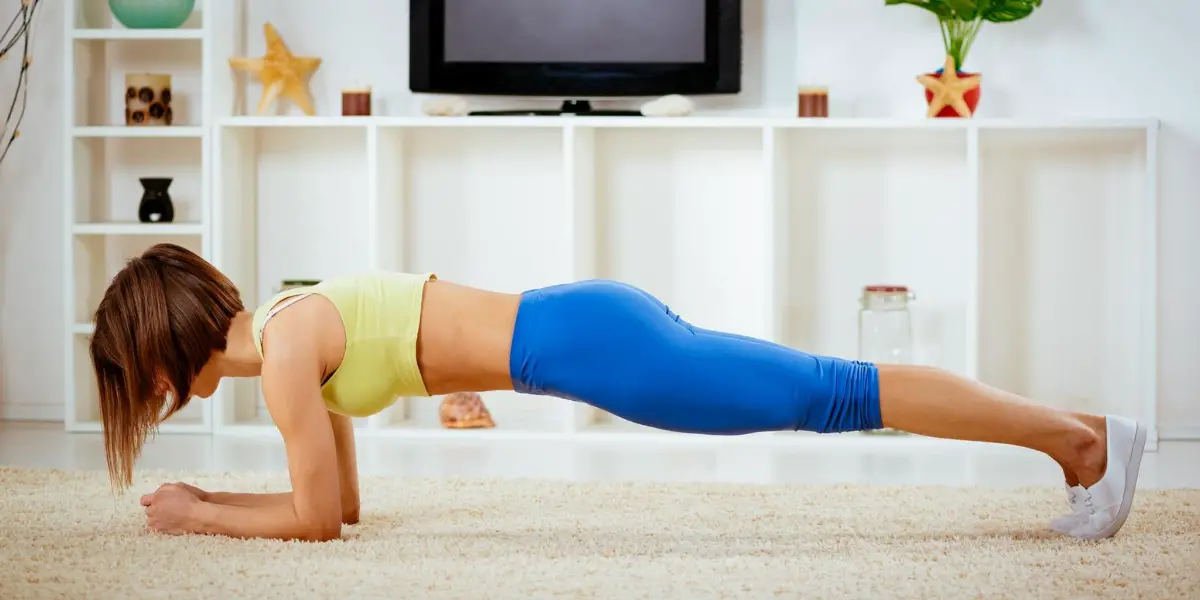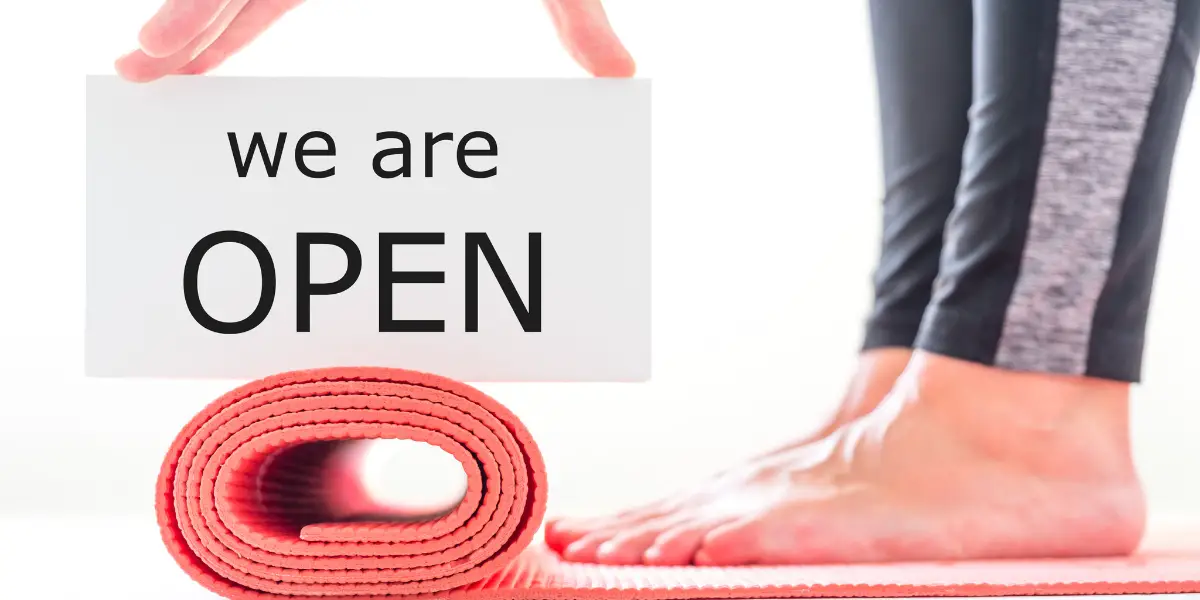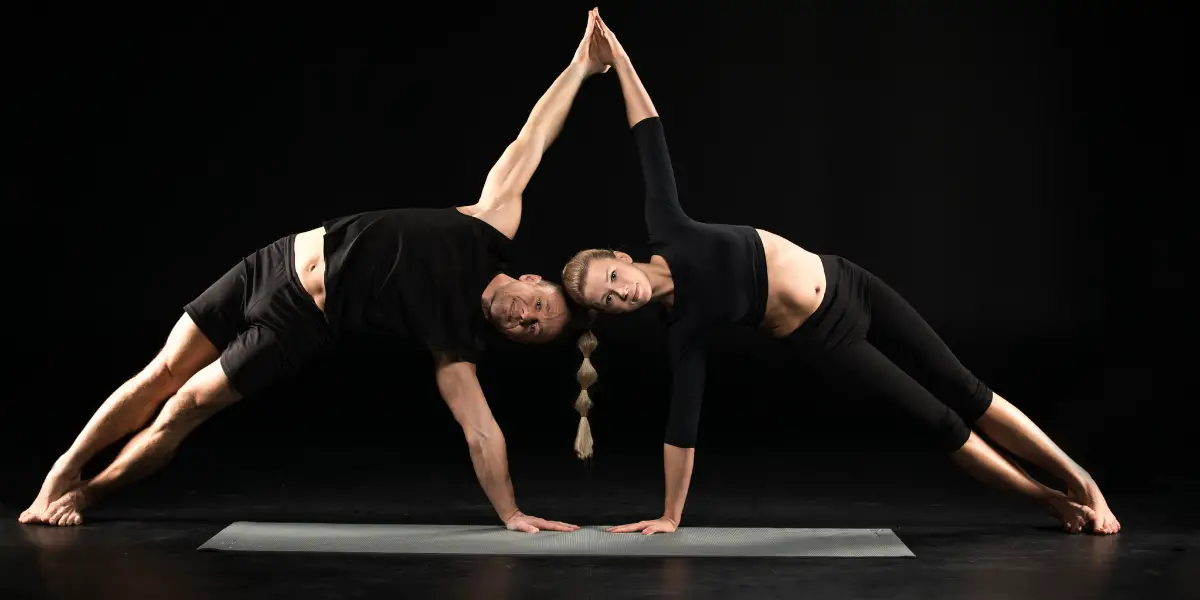We all know how much we should exercise to keep our bodies and minds healthy. If you find yourself looking for a way to start this goal, Pilates is a great option! Pilates can be done at home, and also in classes.
As a Pilates instructor, I get asked a lot of questions when clients first contact me wanting to learn more about taking up the practice. I’ve put together this guide to help beginners understand what Pilates is and how to get started.
What is Pilates?
Pilates is an exercise that is centred around muscle control. It is focused on posture, breathing, and alignment. Pilates can be used to strengthen muscles, reduce back pain, and promote mental calm.
It was originally created by Joseph H. Pilates, who believed that by using your body weight as resistance it would help strengthen all areas of your body, including your back, abdomen, legs and arms.
His exercises were designed so they could be done anywhere at any time without equipment and the simplicity and effectiveness has led Pilates to become popular all over the world.
Getting started with Pilates is not as complicated as it may seem. Once you understand the basic principles of Pilates, the exercises themselves are very simple.
What are the benefits of Pilates?
Pilates has gained many loyal practitioners because of the wide range of benefits it offers:
- Improves core strength
- Strengthens back muscles
- Improves posture
- Improves flexibility and mobility
- Improves breathing and lung capacity
- Improves mental focus and concentration
- Improves balance and coordination
- Promotes weight loss and burning calories
- Promotes better sleep and reduces the risk of insomnia
- Improves mood and feelings of happiness and well-being
It doesn’t matter what age or gender you are, everyone can benefit from better posture, more mobility in their joints and improved core strength.
How to determine if Pilates is right for you
The great thing about Pilates is it very accessible, as long as you’re seeking to improve your health, increase your ability to exercise, and make your body more flexible then Pilates is a great option.
The exercises are designed to be challenging, but anyone can do them as long as they have a willingness and patience to learn.
I started my Pilates journey due to a problem with my spine. Known as Scoliosis, I suffered from an unusual curvature in my spine and wanted to explore if Pilates could help me address my issue. It has been tremendously helpful and along the way I fell in love with Pilates so much I quit my teaching job to retrain as a qualified Pilates instructor.
As an instructor I’ve learned how accessible Pilates is, it doesn’t matter what gender you are, your height, weight or age, everyone can take up and benefit from Pilates.
What muscles does Pilates focus on?
The range of moves and use of body weight resistance can impact muscles throughout your body.
Pilates predominantly works your core muscles, which are located between your ribs and pelvis. These include your abdominals, obliques, transverse abdominal muscles, diaphragm, pelvic floor muscles and hip flexors.
Your upper body also gets worked through movements such as shoulder rolls, side bends, arm circles, leg lifts, twists and rotations. Your lower body includes your glutes, hamstrings, quadriceps, calves and ankle/foot dorsiflexion.
What kind of strength does Pilates focus on?
Strength training involves working against gravity rather than pushing yourself away from something else like weights or machines. This type of movement helps build muscle mass and endurance.
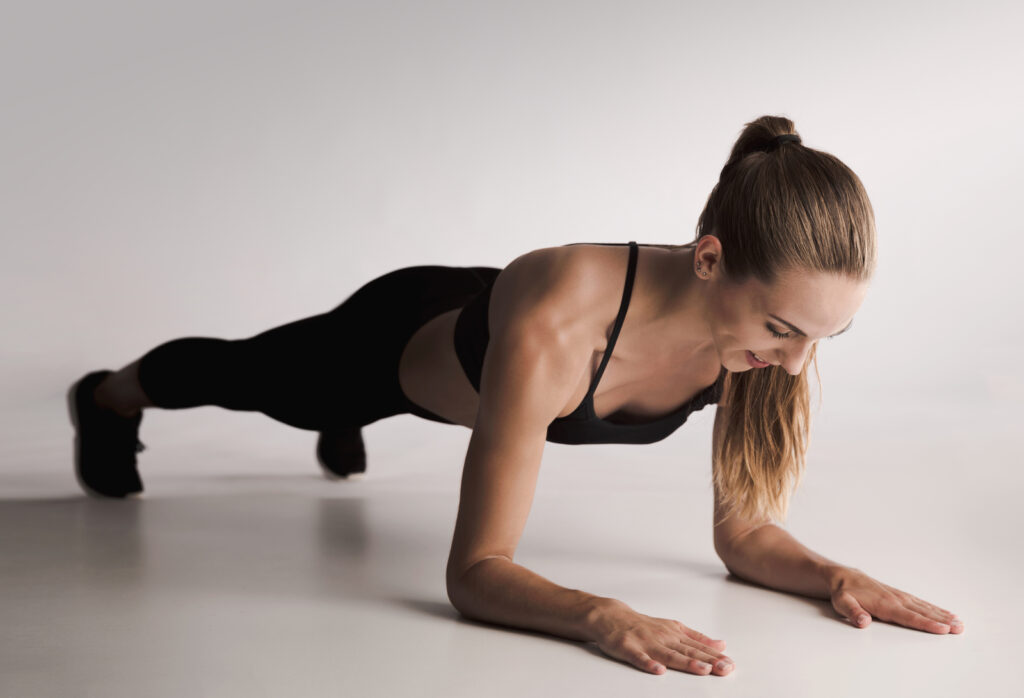
Pilates works on developing dynamic strength which gives you greater stability and control. Such improvements mean you’ll gain better posture, a better range of motion and gain confidence in your movements.
Is Pilates safe?
Yes! There are several reasons why Pilates is considered one of the safest forms of fitness available today.
Firstly, Pilates focuses on building strong core muscles that support all other parts of your body. The core muscles work together to stabilize your torso and keep everything aligned properly. They also provide protection for your back by helping prevent injury when lifting heavy objects.
Secondly, Pilates uses gentle techniques that allow you to progress at your own pace without causing any damage. You won’t experience pain or discomfort during class sessions.
Thirdly, there’s no equipment involved – just your bodyweight and some basic props. So even if you don’t have access to a gym membership, you can still get fit using this method.
A quick guide to getting started with Pilates
If you’re keen to get started with Pilates but don’t know where to begin, here are some quick tips to make sure you’re starting off right:
Grab the basics: At minimum you’ll want to invest in a Pilates mat and suitable form fitting clothing (for more details on clothing check out: “What are the best clothes for Pilates?”)
Find a class near you: There are many different types of classes available from private lessons to group sessions. You will need to choose one depending on your needs and preferences. Some studios offer both individual and group classes while others specialize in either.
Subscribe to Pilates YouTube channels: There are hundreds of hours worth of free workout videos available to you on YouTube, these are a great way to fit in Pilates outside a paid for class. To get started, click this link to subscribe to my channel.
Make Pilates part of your routine: The key to incorporating Pilates into your life is the make it part of your weekly routine. Book yourself onto a regular class or set aside a set time for a home workout.
The best part of practising Pilates is that there are no limits to where you can take it. You don’t need expensive gym memberships or fancy equipment to do these exercises. All you really need is some space and a mat.
Equipment needed for Pilates
As Pilates makes use of your entire body it’s one of the few physical activities that doesn’t require equipment. That being said, there is a range of Pilates equipment that can enhance your workout.
Pilates Mat: The main piece of equipment used during a Pilates session. A good quality mat should provide support throughout all areas of your body including your back, hips, knees and ankles. They also come in various sizes which means you can find one that suits your size perfectly.
Resistance bands: These are often referred to as ‘band’ because they look like rubber band. They are a useful tool when you want to make moves harder, without having to hold weights.
Foam Roller: Foam rollers offer an effective form of stretching without putting too much pressure on specific joints. Rolling over them will increase blood flow while reducing muscle tension.
Stability Ball: A large, inflatable, ball also known as a stability trainer. Helps improve core strength and balance. Check out this post detailing stability ball exercises.
Hand weights: Small hand weights that are used in some sessions to increase the difficulty of workouts.
Reformer: Invented by Joseph Pilates, a reformer is a machine designed specifically for use in Pilates. They’re very expensive and so many people visit a Pilates studio and specific reformer classes to make use of them.
Pilates Ring: Also known as magic ciurcles, this circular ring with handles on that is used in core-strengthening exercises.
Yoga Blocks: Yoga blocks are another versatile piece of equipment that can be used in any number of ways. From standing postures to seated ones, yoga blocks give you more options when performing stretches.
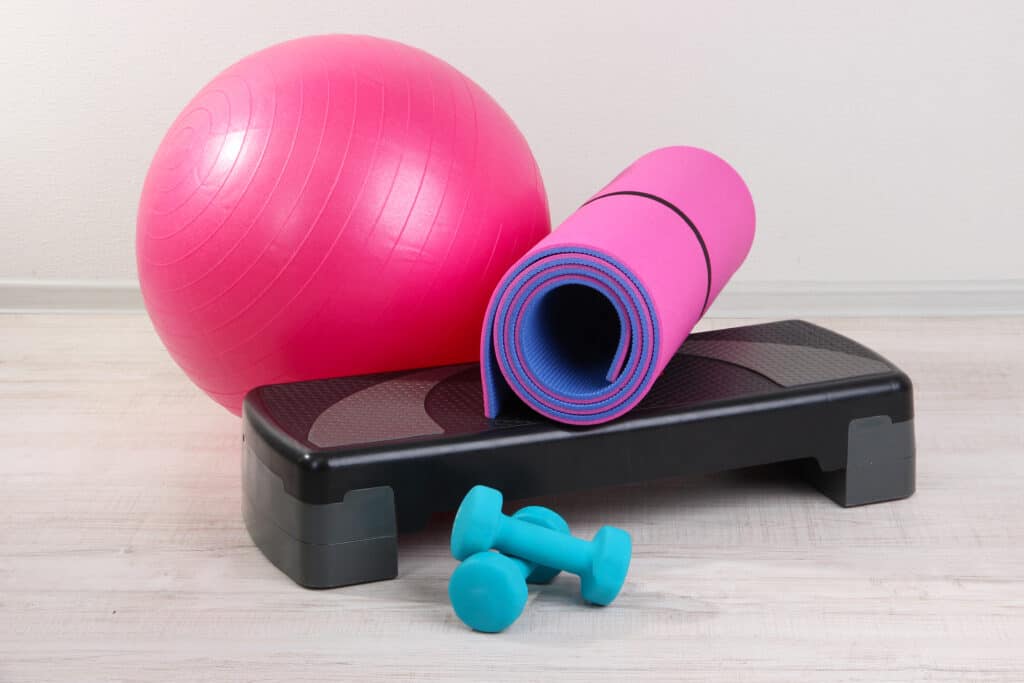
If you attend Pilates classes, you will often find a lot of this equipment is provided, giving you a chance to try it out before investing.
If you’re looking to incorporate Pilates into your fitness regime, then I would recommend starting off with a mat before moving onto other pieces of equipment.
Clothing needed for Pilates
While there is no specific uniform or outfit, what you wear is still important. You should ensure you’re wearing form fitting clothing regardless of the type of Pilates class you are doing.
This will ensure your clothes don’t interfere with your exercises, which has the potential to end in injury, and also allows your instructor to monitor how well you’re performing each move.
If you’re unsure what clothes to get I personally use and highly recommend Conturuk.com (affiliate link to webshop).
For further information, check out this blog post: What are the best clothes for Pilates?
How to find a qualified instructor
While there are a lot of freely available instructional videos online, I highly recommend visiting a qualified Pilates instructor as when starting out, it is very important to understand how to do your workout correctly to prevent injuries from occurring and an instructor will make sure your movements are correct.
As the popularity of Pilates has risen, so too has the number of available instructors. You can often find qualified instructors as part of the fitness club staff, but more often you’ll find they’ve struck out on their own to offer their own private sessions as a personal trainer.
The most common way to find a qualified instructor is through word of mouth. If you know anyone who regularly attends Pilates classes, ask them where they go. This could lead you to finding a reputable teacher nearby.
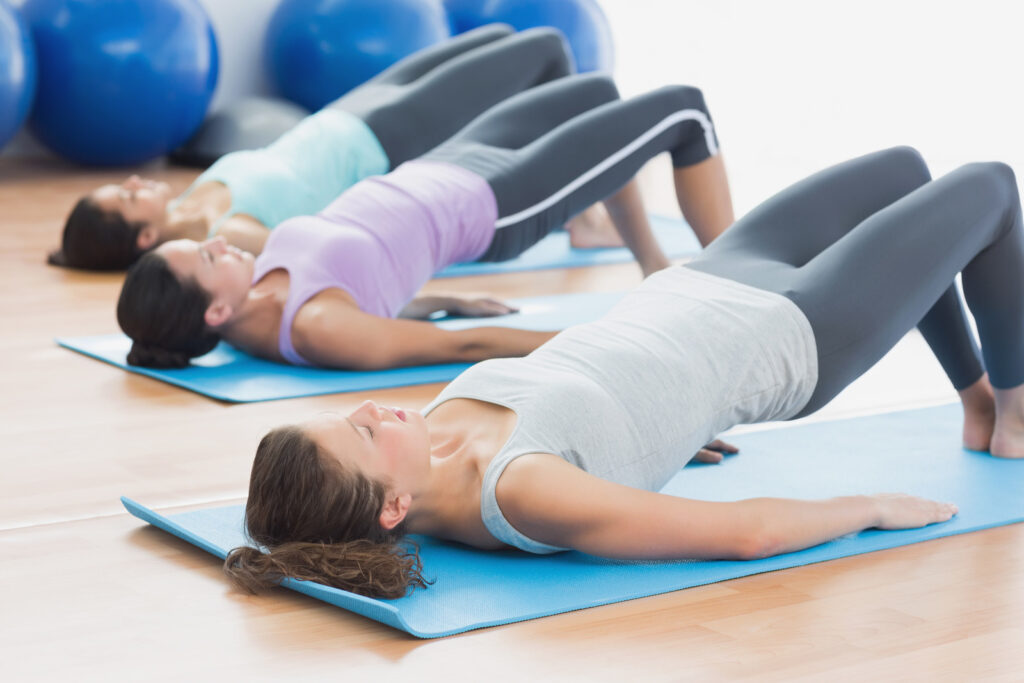
You can also ask Google Maps to show “Pilates instructors near me”. The returned listings should have details about how to contact each option, a link to the website (if they have one) and client reviews.
Things to keep in mind when booking a session:
Class sizes: A larger class will usually mean a lower cost per person. The downside to this is less one to one instruction from your instructor.
Type of class: I’d suggest starting with a beginners classes. These are usual a mat class where you learn the basic exercises without any equipment. As you progress further, you might want to try variants such as Power Pilates or classes that make use of special equipment such as the Reformer.
Class delivery: Following the global pandemic many instructors had to adapt their service from an in person class to an online class. Many, like myself, continue to offer remote classes that you can join in the comfort of your own home. If this is of interest be sure to claim your free class here: Claim Free Online Class.
Frequency: How many times per week would you like to attend the class and do they offer times that are convenient to you.
Pricing: Committing to a set number of classes often comes with the benefit of reducing the price per class. Check out the beginner classes, if they’re at a suitable time commit to a set number and invest in your wellbeing. Purchasing in advance also gives you that little extra motivation to go when you’re not feeling like it, not going = money wasted!
Each instructor or studio will have slightly different classes and offers, it’s important to speak to them before paying for any lessons, discus your fitness goals and make sure you feel comfortable with what they have to offer.
How often should I do Pilates as a beginner?
When getting started in Pilates, 2-3 times per week would be perfect for beginners. Ideally, these should be workouts led by a trained Pilates instructor until you are confident you can practice at home, at which point you can do Pilates every day if you wish.
In my experience, people tend to overdo things initially, which can lead to injury and becoming discouraged. It’s really easy to become discouraged after doing something incorrectly leading to injury, which often leads to giving up altogether.
It takes practice to master anything, whether it be learning a language, playing a musical instrument or exercising. So while it may take some time to build muscle strength and endurance, it won’t happen overnight.
If you start off slow, you’ll get better results faster than trying to push yourself too hard.
How long after starting Pilates will I see results?
This depends on several factors, including your current level of fitness and how often you workout, but generally speaking, it takes around 2 to 3 months to achieve noticeable changes. Pilates is not a quick fix and it takes time for change to occur.
You’ll know changes are taking place as you will start to feel sore after a good Pilates session. That’s your body letting you know it’s working on improving your muscles after they’ve been worked. Keep up with regular classes and you will start to notice:
- Improved fitness level
- Improved core strength
- Improved posture
- Improved flexibility
- Improved balance
- Improved energy levels
- Improved muscle tone
Note this only happens if you create a regular fitness routine. If you just do Pilates once in a while, you are unlikely to see much of a change.
Should I do other forms of exercises on top of Pilates?
If you’re a total beginner to exercise you might find that once you get started, you get bitten by a bug that makes you want to do more. That’s a good thing, as while Pilates is an excellent all-round method of working out it benefits from being paired with different types of excesses.
What kind of exercise routine should I follow once I’ve completed my first few sessions?
Once you’ve been practising Pilates for a couple of weeks, you should begin adding other forms of cardio into your workout regime. You don’t need to add an hour onto your weekly schedule, start by adding just 10 minutes here and there throughout the day, for example a brisk walk that increases your heart rate.
You might also want to consider adding streth training with weights. While Pilates movements make use of your own body weight, they are unable to help you build muscle the way weight training would. You can read more about this in my blog post “Is Pilates Strength Training?”
Pilates workouts you can do at home
After learning the basics by attending beginner classes you might feel confident about attempting Pilates at home, but still need some guidance on what moves to do.
When not in a class setting be sure to check you have your room set up correctly. You don’t need any specialized equipment, just a mat and access to YouTube.
There are lots of videos available, here is my 20-minute mat workout for beginners class to get started.
I’ve lots more free videos available on my channel, don’t forget to subscribe so you can quickly find them and be notified when I publish a new video.
In conclusion, Pilates is one of those things where you really need to commit yourself to doing it regularly or else you won’t reap its full rewards. It requires dedication and consistency over time to see real progress. Don’t give up too soon!

